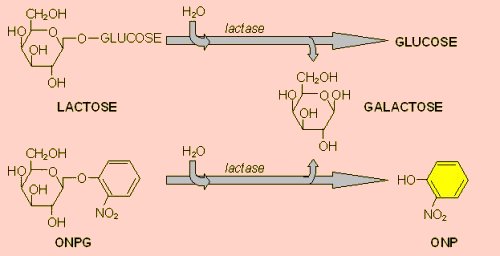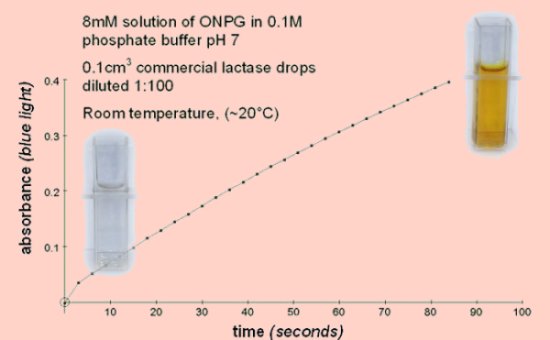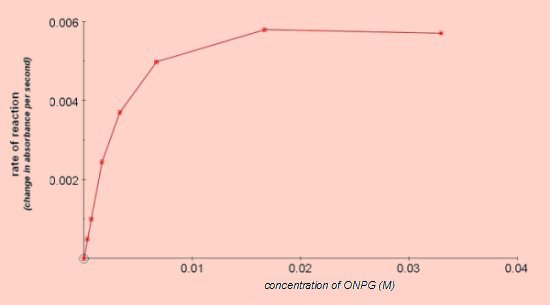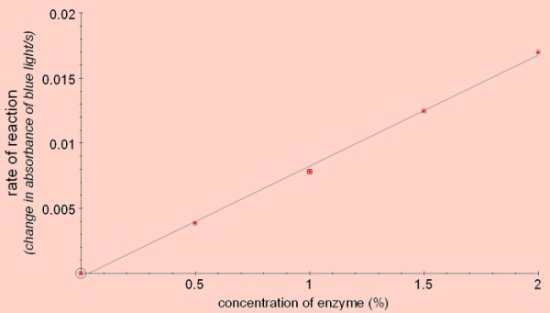LactaseLactase activity can easily be demonstrated using the artificial substrate ONPG which is converted to a yellow product by lactase. Lactase, (EC 3.2.1.108), is responsible for the hydrolysis of lactose, forming glucose and galactose. It is secreted by the intestinal villi in humans, though the ability to produce the enzyme is lost by many people after childhood and leads to lactose intolerance, an inability to digest lactose. The retention of lactose digestion in adults is found in populations that have for thousands of years used milk as a source of food for adults, such as the Fulani people in Africa and many Northern European societies such as the Dutch, Swedes and British. This is an interesting example of adaptation in human evolution. Lactase from yeasts and other fungi is used to break down lactose in order to make milk suitable for people with lactose intolerance, and in the manufacture of ice cream. Lactase, (usually fungal), is readily available in solution; a few drops added to milk help to make it digestible by people with lactose intolerance. This is not quite the same as the mammalian enzyme, being a β-galactosidase (EC 3.2.1.23). The method described here uses an artificial substrate, o-nitrophenol-galactopyranoside, (ONPG). Lactase splits colourless ONPG into galactose and o-nitrophenol, (ONP), which is bright yellow.
 ONP is colourless in acidic pH and increasingly yellow in alkali. Therefore this reaction is not really suitable for studies of the effect of pH on enzyme activity.
Absorbance vs Time 
Effect of substrate concentration 
Effect of enzyme concentration
Reaction mixture
Stored refrigerated the undiluted liquid retained over 60% of its activity after 2 years. Diluted preparations do not keep well but it is easy and inexpensive to prepare fresh dilutions as required. The buffering is important as the colour of the product (ONP) depends on the pH. 2.9cm3 of the ONPG in buffer solution was added to 0.1cm3 of lactase in a colourimeter cuvette and the absorbance recorded continuously. Room temperature (approximately 20°C) was used throughout.  Click to download a pdf file containing much of the information about this
topic.
Click to download a pdf file containing much of the information about this
topic.
|
